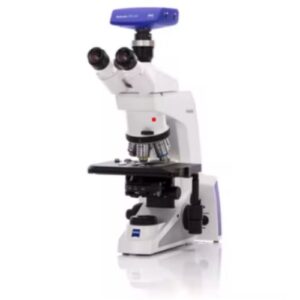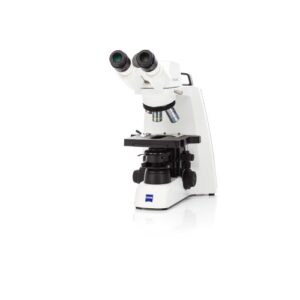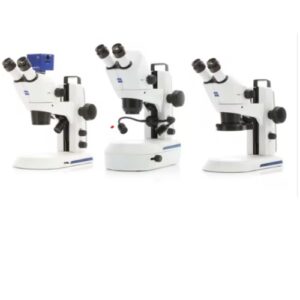Did you know that the earliest form of the compound microscope was invented around the year 1600? Since then, microscopes have advanced significantly. They have paved the way for better medical and scientific research across the globe.
One commonly used microscope today is the “stereo microscope”. This type of optical scope includes a lot of great features and benefits when it comes to research. In fact, many people in different professions use this scope every day.
But what is a stereo microscope exactly? How is it different from other types of microscopes that are used today? Continue reading this article to find out more about stereo microscopes.
What Is a Stereo Microscope?
A stereo microscope is an optical scope that offers a three-dimensional picture of a specimen. This type of microscope may also be dubbed a stereo zoom microscope or a dissecting microscope.
Separate objective lenses and eyepieces are included in dissecting microscope components. As a result, each eye has its own unique optical path.
A three-dimensional image is created by slightly varying angling views to the left and right eyes. It also goes by “dissecting microscope” since it provides a three-dimensional perspective.
How Do Stereo Microscopes Work?
The parts of a stereo microscope each serve a specific purpose. Depending on how it is set up and what purposes it will serve, the parts that come with this kind of microscope can vary significantly.
A stereo or dissecting microscope makes advantage of the object’s reflected light. It amplifies at low power, making it perfect for enhancing items that are opaque. It is beneficial to study solid or thick samples since it makes use of light that naturally reflects from the material. A stereo microscope has a 10x to 50x magnification range.
Depending on the demands of the user, additional supplementary/auxiliary lenses may get used. They change the operating distance and magnification. For instance, a lens of 0.3x, 0.5x, or 0.7x allows a longer working distance is necessary. You can boost your microscope’s total magnification to 300x or more.
Under a dissecting microscope’s magnification, opaque items are visible. Using more sophisticated stereo microscopes, you can see electrical parts and circuit boards.
Dissecting vs. Compound Microscope
A compound microscope is distinct from a stereo or dissecting microscope. In contrast to the compound microscope, the image in a stereo microscope is upright rather than reversed and upside down.
With a compound microscope, the left and right eyes see identical images thanks to a single optical channel.
A stereo microscope gives each eye two optical pathways, creating a three-dimensional image.
Using a compound microscope, samples can be viewed with magnifications ranging from 40x to 1000x or more. Examples include seeing germs, blood levels, chromosomes, or animal or plant cells.
Low magnification is used by stereo microscopes, often known as stereo zoom microscopes. They can have fixed (1 x and 3 x or 2 x and 4 x) or continuous zoom magnification (0.7 x through 4.5x).
Circuits, surface soldering, jewelry repair, fossil inspection, and insect or botanical dissections are just a few examples of electronic components that can be seen with them.
When Is a Stereo Microscope Used?
A dissecting microscope enables real-time work on a specimen while it is being observed.
A dissecting microscope has a greater working distance. This enables the dissection of objects or even the performance of microsurgery.
These microscopes get used by biologists for dissections. They’re also used by botanists for plant studies and pathologists for dermatological examinations.
Magnification from a stereo microscope facilitates sorting and three-dimensional surface visualization. This, of course, enables a more detailed analysis of items.
Stereo microscopes get used by professionals to check fabric and textiles. Paleontologists use them to clean and examine fossils! As you can see, many different people benefit from using these scopes.
Stereo microscopes can be set up for any application. There are several different stands and mounts that can be used, such as boom stands, articulating or flex arms, plain stands, track stands, table mounts, and more. A clearer and brighter view of the specimens is also provided by microscope illuminators.
Stemi 508 Greenough Stereo Microscope
The Stemi 508 Greenough stereo microscope is one of the best stereo microscope optical options out there.
Apochromatic optics enable you to capture photographs with exceptional image contrast. What’s more, colors are more accurate and vivid. Finally, the mechanics of the microscope help the microscope endure heavy workloads.
You can constantly maintain an overview of your sample thanks to the big up to 36 mm object field. The 8:1 zoom then enables the amplification of details up to 50 times. Add replaceable lenses, and you may observe a 122 mm2 area.
More ergonomically sound than any other stereo microscope of the type is the Stemi 508. Even after a long day of work, you can maintain better posture because of the low viewing angle of 35°.
Stemi 305 Compact Greenough Stereo Microscope
The Stemi 305 is a portable Greenough stereo microscope that’s another great option.
With a 5:1 zoom for use in biology education settings as well as labs and commercial production settings, no preparation is necessary. You simply look at your samples as they are: three-dimensional and sharp in contrast.
This convenient microscope’s integrated, long-lasting LED illumination is something well-loved by many.
You can link several microscopes and share your photographs through WLAN, as well. You may do this by using the included 1.2 Megapixel Wifi camera or the traditional phototube to access all ZEISS microscope cameras.
Enjoy the Stereo Microscope Benefits by Purchasing One Today
A stereo microscope is a low-power compound device used for a closer examination of specimens. It is also referred to as a dissecting microscope.
Now that you’ve learned the question “what is a stereo microscope?”, you can enjoy the benefits of this piece of equipment by purchasing one today. If you have any questions about buying your first microscope from us, please don’t hesitate to contact us at the link now!




